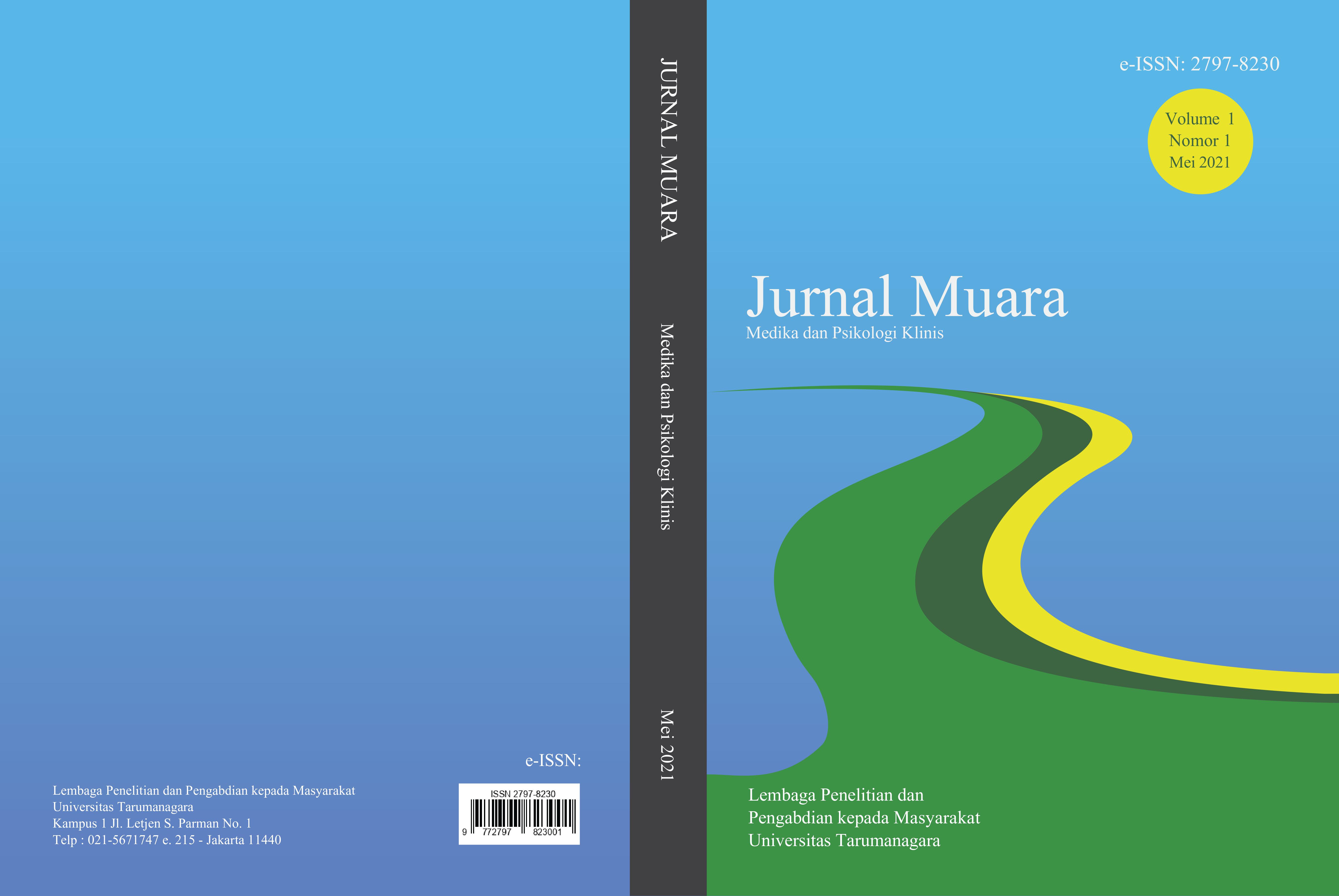PENGUKURAN KUALITAS HIDUP SEBAGAI INDIKATOR STATUS KESEHATAN KOMPREHENSIF PADA INDIVIDU LANJUT USIA
Main Article Content
Abstract
Indonesia mengalami transisi demografis menuju struktur penduduk tua yang tidak hanya berdampak pada bidang kesehatan, namun juga pada berbagai aspek kehidupan. Kompleksitas proses penuaan dan kerentanan lansia menderita beberapa penyakit kronik, menyebabkan konsep “sakit vs sembuh” maupun indikator angka kesakitan sulit mencerminkan status kesehatan dan keberhasilan program kesehatan lansia. Walaupun digunakan untuk mengevaluasi keberhasilan terapi pada pasien dengan penyakit kronis tertentu, namun penggunaan pengukuran kualitas hidup sebagai indikator status kesehatan komprehensif pada masyarakat lansia masih sangat terbatas. Mini survei deskriptif potong lintang ini adalah studi percontohan, dilakukan untuk memberikan gambaran preliminari perbandingan hasil penilaian kualitas hidup dengan penilaian kesehatan secara umum, dan keterkaitan antar aspek-aspek kehidupan lansia. Sebanyak 28 responden lansia di Jakarta Barat, direkrut dengan metode convenient, mengisi kuesioner kualitas hidup lansia secara daring. Dari 28 responden, 57,1% menilai tingkat kualitas hidupnya baik (skor 4), rerata skor tertinggi pada aspek spiritual (81,9), sedangkan rerata skor terendah pada aspek kesehatan fisik (64,7). Didapatkan kecenderungan hasil penilaian tingkat kualitas hidup lebih baik (skor lebih tinggi) daripada tingkat kesehatan secara umum. Aspek kesehatan fisik menunjukkan korelasi paling kuat dengan aspek kesehatan mental (r=0,84; p<0,001), dan diikuti dengan aspek lingkungan (r=0,75; p<0,001). Pengukuran kualitas hidup diharapkan dapat memberikan pemahaman komprehensif tentang status kesehatan lansia.
Indonesia is undergoing a demographic transition towards an older population structure, which not only impacts on the health sector, but also on various aspects of life. The complexity of the aging process and the vulnerability of the elderly to suffer from several chronic diseases, make the concept of "sick vs cured" and indicator of morbidity difficult to reflect the health status and the success of elderly’s health programs. Although it is used to evaluate the success of therapy in patients with certain chronic diseases, the use of quality of life as an indicator of comprehensive health status in the elderly community is still very limited. This cross-sectional descriptive mini survey was a pilot study, conducted to provide a preliminary description comparing the results between the quality of life and general health assessments, and the correlation between lives’s aspects of the elderly. A total of 28 elderly respondents in West Jakarta conveniently recruited, filled out an online quality of life questionnaire. Of the 28 respondents, 57.1% rated their quality of life as good (score 4), the spiritual aspect recevied the highest average score (81.9), whilst the physical health aspect received the lowest average score (64.7). There is a tendency for the quality of life level to be better (higher score) than the general health level. Physical health aspects showed the strongest correlation with mental health aspects (r=0.84; p<0.001), followed by environmental aspects (r=0.75; p<0.001). Measuring the quality of life is expected to provide a comprehensive understanding of the elderly’s health status.
Article Details
References
Abadi, K., Wijayanti, D., Gunawan, E. A., Rumawas, M. E., & Sutrisna, B. (2013). Hipertensi dan risiko mild cognitive impairment pada pasien usia lanjut. Jurnal Kesehatan Masyarakat Nasional 8(3), 119-124.
Badan Pusat Statistik. (2019). Statistik penduduk lanjut usia (04220.1905). https://www.bps.go.id/publication/download.
Dewi, F. I. R., Rostiana, & Rumawas, M. E. (2018). The assessment model of quality of life in Indonesian elderly [Confrence Proceedings]. Advanced Science Letters, 24, 417-419.
Gerst-Emerson, K., & Jayawardhana, J. (2015). Loneliness as a public health issue: the impact of loneliness on health care utilization among older adults. Am J Public Health, 105(5), 1013-1019.
Hantoro, I. F., Syam, A. F., Mudjaddid, E., Setiati, S., & Abdullah, M. (2018). Factors associated with health-related quality of life in patients with functional dyspepsia. Health Qual Life Outcomes, 16(1), 83.
Hermawati, I. (2015). Kajian tentang kota ramah lanjut usia. Disampaikan pada Seminar dan Lokakarya Tentang Kota Ramah Lansia, Yogyakarta, 23 April 2015.
Indrayani, & Ronoatmodjo, S. (2018). Faktor-faktor yang berhubungan dengan kualitas hidup lansia di desa Cipasung Kabupaten Kuningan tahun 2017. Jurnal Kesehatan Reproduksi, 9(1), 69-78.
Kementerian Kesehatan Republik Indonesia. (2015). Rencana strategis
Kementerian Kesehatan RI tahun 2015-2019. https://www.kemkes.go.id/resources/download/info-publik/Renstra-2015.pdf
Kementerian Kesehatan Republik Indonesia. (2016). Situasi lanjut usia (lansia) Indonesia [Monograf]. https://www.kemkes.go.id/resources/download/pusdatin/infodatin/.
Post, M. W. (2014). Definitions of quality of life: what has happened and how to move on. Top Spinal Cord Inj Rehabil, 20(3), 167-180.
Prabhaswari, L., & Ariastuti, N. L. P. (2015). Gambaran kejadian depresi pada lanjut usia di wilayah kerja Puskesmas Petang I Kabupaten Badung Bali 2015. Isainsmedis, 7(1), 47-52.
Salim, S., Yamin, M., Alwi, I., & Setiati, S. (2017). Validity and Reliability of the Indonesian Version of SF-36 Quality of Life Questionnaire on Patients with Permanent Pacemakers. Acta Med Indones, 49(1), 10-16.
Seo, J., Choi, B., Kim, S., Lee, H., & Oh, D. (2017). The relationship between multiple chronic diseases and depressive symptoms among middle-aged and elderly populations: results of a 2009 korean community health survey of 156,747 participants. BMC Public Health, 17(1), 844.
Theofilou, P. (2013). Quality of Life: Definition and Measurement [Theoritical contributions]. Europe's Journal of Psychology, 9(1), 150-162.
Tonon, G. (2015). Relevance of the use of qualitative methods in the stydy of quality of life. In G. Tonon (Ed.), Qualitative Studies in Quality of Life: methodology & practice (1 ed., pp. 3-21). Springer International Publishing.
World Health Organization. (1997). WHOOOL Measuring Quality of Life https://www.who.int/mental_health/media/68.pdf


